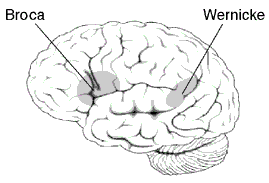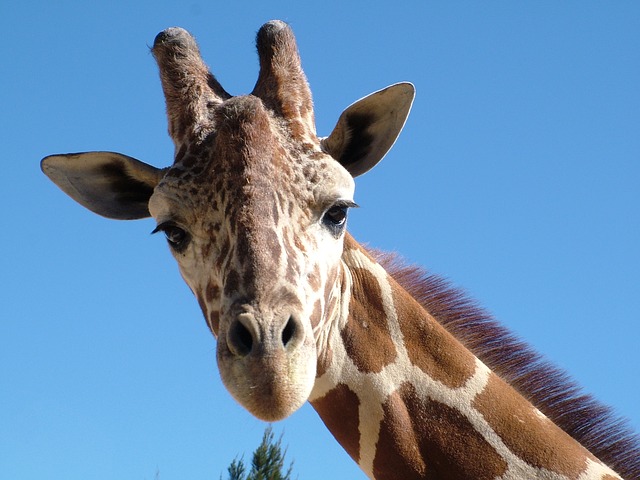Language
Article curated by Ginny Smith
Language is a vital part of being human, and some argue it is what sets us apart from other animals. But plenty of mysteries remain. Why do children find it so easy to learn a language, but many adults struggle? And do any animals have true language?

The evolution of human language
No one really knows how human language first evolved, but many theories have been suggested. One idea is that calls and gestures transformed over time into complex communication as the environment became more complex. Those who could communicate in this way were more successful, and so the ability was selected for.
However, there is no real proof for this theory. Instead, it may be that language was a by-product of another adaptation, rather than something that was selected for. It may simply be that as our brains evolved to be better at complex tasks like making tools, the structures for communication came into being, and so language appeared.
Even within each theory there are disagreements. If language did evolve, how and why? One idea is that it started as a way for mothers to reassure their babies when they had to put them down, because our lack of hair meant babies could no longer hang on to their mother's backs like infant monkeys do. Or did it evolve to help lubricate the complex social structures of early humans and ensure altruism was reciprocated and bonds were formed? There is even disagreement over whether it initially evolved from gestures that had meaning, or whether it originated with calls like those of other animals.





Learning to speak

The time during which you can learn something is known as a Critial Period, and they are relatively common in the animal kingdom. For example, a newly hatched chicks will imprint on the first suitable moving stimulus they see after hatching, deciding that that thing is its mother, and what it itself looks like. If they don't imprint in the first 14-16 hours, the opportunity has passed, and they will never imprint on anything.
The evidence in humans is limited, but it does seem that for some aspects of language, there is a window after which the opportunity for learning has passed. One of the strongest pieces of evidence comes from the few examples of feral children, raised with very little human interaction. The most studied case was of Genie, who was kept tied to a chair in a silent room for most of the first 13 years of her life. When she and her mother finally escaped, she spoke only a few words, and couldn’t chew or straighten her arms and legs. However, with help, she rapidly begin acquiring new vocabulary, and stringing together pairs of words. It seemed the critical periods theory was in trouble – it was possibly to learn language after early childhood. But, unfortunately, her progress didn’t continue. She remained stuck at this stage, and was never able to grasp grammatical rules or put together whole sentences. So for grammar, at least, this supported the critical periods hypothesis. But cases like this are rare, and it is impossible to say whether her years of abuse were part of the problem.
Now, most scientists talk about sensitive periods rather than critical periods – times when our brains are more ready to absorb new information. This doesn’t mean we can’t do it at other times, but during these sensitive periods learning is easier and faster.
Learn more about whether humans have critical periods for learning.


 2
2Delayed development
The nature and causes of language impairments in children are still largely unknown. Around 3% of children have particular difficulty learning to talk or understand language for no obvious reason. Twin studies from Oxford University strongly suggest a genetic component, but the specific genes and how they act have not yet been identified. For example, children who have an extra X or Y chromosome are at particular risk of speech and language difficulties, despite having broadly normal intelligence, and are highly variable in the extent of their language skills. Researchers are looking for ways to predict language acquisition difficulties from genes and understand how genes affect language learning in children who have the normal complement of chromosomes. Researchers are interested in whether the genes that cause a risk for specific language impairment are implicated in other conditions such as autistic spectrum disorder and developmental dyslexia, since many children have both.


 2
2By averaging the small electrical signals in the brain that are elicited by sounds, we can gain insights into which sounds children can distinguish, and which brain regions are involved in sound perception. So far, they have found that these children use larger and less focal regions of the brain to process sound than other children the same age, and are trying to work out if this is a cause or symptom of specific language impairment.


 2
2Language in the brain
We know that our brains are able to change throughout our lives – the networks of neurons can grow, and new connections can be formed or lost. One of the reasons scientists believe children are so good at learning languages is that their brains are more plastic, meaning they can change more easily. We don't know what changes in the brain as we age to put the breaks on this learning ability, but by understanding more about it we may be able to find a way to extend the flexibility as we grow and age.
Learn more about Rewiring the Brain.


 3
3

Historically, researchers have identified two main brain areas vital in language processing through studies on people with damage to these areas. These are in the left hemisphere of the brain in most people and are called Wernicke's and Broca’s areas, after the people who discovered them.
Wernicke’s area is involved in speech production, and is vital for the meaning of words. Patients with damage to this area have difficulty understanding words, but seem to speak fluently and easily. However, their words will lack meaning. Broca’s area is linked to the grammar and syntax of speech – damage to this areas leads to hesitant, stumbling speech, and an inability to use grammar to understand a sentence, even when the meanings of the words are understood.
Recent imaging studies, however, suggests speech processing may not be quite as neatly divided between as previously suggested, but spread over a wide network of cortical areas. The initial studies on damage to Wernike's and Broca's were in patients who also had damage to other regions, but this wasn't initially taken into account. We now know that patients with more focused lesions don't show the same level of difficulty with speech. Exactly how these different regions are involved, and whether our speech ability is distributed across them or whether certain roles are focused in certain areas remains to be seen.

Even in healthy people, sometimes the language areas of our brain can play tricks on us. Tip of the tongue syndrome is a common occurrence when you ‘know’ the word you are searching for, but can’t seem to access it. It gets more common as people age and occurs more frequently in people who are bilingual, especially when they are speaking their second language.
One theory is that the cues to the word you are searching for have caused you brain to recall another, similar word, which then blocks access to the word you want. Another idea is that the activation level of the word is strong enough for you to detect it is there, but not strong enough to access it directly.
We also know that people store memories in different ways, such as through motion, sound, colour or touch. And this means we can sometimes find it difficult to "translate" a word from memory that hasn't been used in a while.
Learn more about Tip of the tongue syndrome.


 2
2Do animals have language?

Learn more about Animal language.


 2
2This article was written by the Things We Don’t Know editorial team, with contributions from Ginny Smith, Cait Percy, and Rowena Fletcher-Wood.
This article was first published on 2017-02-01 and was last updated on 2021-06-18.
Blog posts about language


Recent language News
Get customised news updates on your homepage by subscribing to articles













